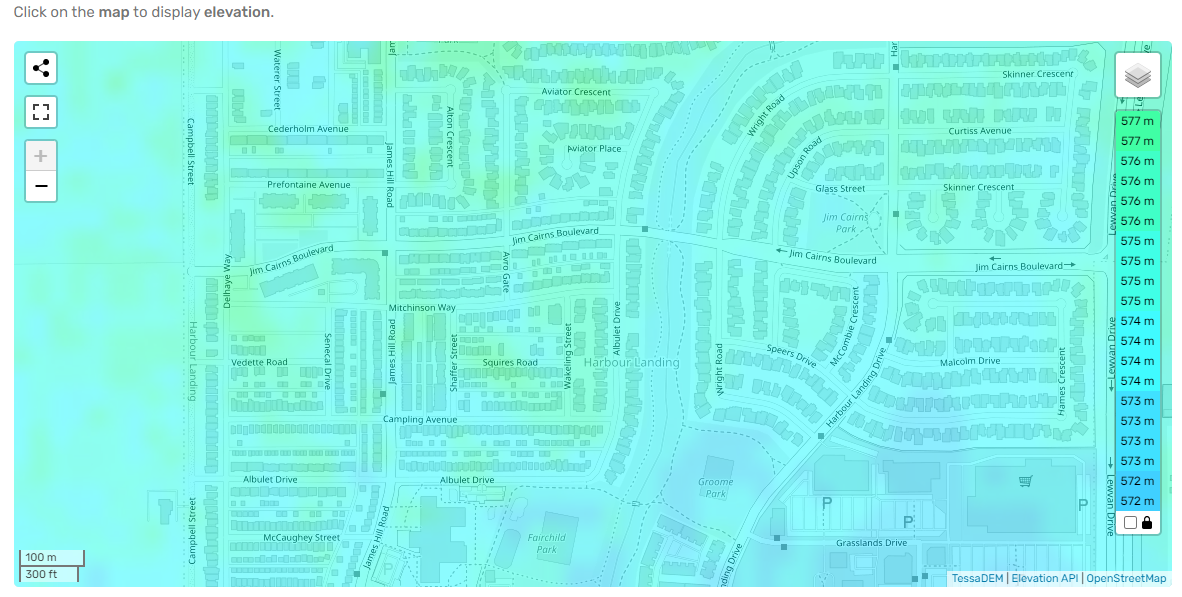Fusedalti Source for the Race
-
@Mff73 said in Fusedalti Source for the Race:
actual position altitude
Where does this altitude come from? I must either be in the GPS message received by the watch along with the coordinates or, it cross references a database of known GPS/elevation points. And in the case of the latter, I am curious as to what the source of this is?
-
@colinmacdon you can read some wiki about how GPS works.
Basically, the GPS receiver is getting time stamps from different satellites in the orbit. From the time difference of the signals and the known positions of the stellites, the receiver can compute it’s position in the 3 dimensional sphere. With an underlying model of the earth, you now know your horizontal position and your elevation above MSL.For your case you need to know, that the fusedAlti algorithm is only correcting the altitude if the difference is above a certain threshold
-
@colinmacdon
no source : satellites are sending their relative position and with triangulation calculations, and based on a theorical earth shape, devices can estimate local altitude.
But Egika seems quicker than me
-
@Egika said in Fusedalti Source for the Race:
For your case you need to know, that the fusedAlti algorithm is only correcting the altitude if the difference is above a certain threshold
That means if the altitude is within like 20m (not sure of the exact number) of the actual value, FusedAlti will not change it.
-
@colinmacdon This does not work as Garmin does. There is no reference as all is done continuously in real time. A better approach IMHO and in my direct experience.
-
@Brad_Olwin Totally agreed!
-
@Brad_Olwin the latest run without adjusting altitude is much more consistent. Any idea about the elevation offset I am noticing? By various sources, the elevation that the Race is reporting consistently 7m above. If FusedAlti is correcting elevation, it is correcting it to an elevation that exceeds anything in the area.
-
@colinmacdon are you sure a correction did take place at all?
As above, if you are within a certain limit close to the real altitude, nothing is changed.And btw out of curiosity: what difference do 7m make for training or anything else?
-
@Egika said in Fusedalti Source for the Race:
the fusedAlti algorithm is only correcting the altitude if the difference is above a certain threshold
Before I start an activity with gps I calibrate the altimeter manually to the altitude of the start point. With best results, since I use Suunto watches.
Now a question to FusedAlti … in the manual of the Vertical (I think the process is the same as in the Race) I can read:
“Suunto Vertical uses barometric pressure to measure altitude. To get accurate readings, you
need to define an altitude reference point. This can be your current elevation if you know the
exact value. Alternatively, you can use FusedAlti (see 3.16. FusedAlti ) to set your reference
) to set your reference
point automatically.”Does it mean, that FusedAlti is activated by default or must I choose it every time before the start of an activity (with the second option in the altitude settings)?
-
@pilleus said in Fusedalti Source for the Race:
Does it mean, that FusedAlti is activated by default or must I choose it every time before the start of an activity (with the second option in the altitude settings)?
It’s enabled by default and will correct the elevation after 15-20 min of an activity. No need to set the altitude manually. It only led to issues when I did it.
-
@taziden said in Fusedalti Source for the Race:
and will correct the elevation after 15-20 min of an activity
I tested it today during my bike ride. At home I set manually a complete wrong altitude. Then I started the activity and after 8 minutes the altitude jumped to the correct value. It was randomly nearby a point which altitude I know, because it is the highest point at the beginning of the route.
In the altitude graph in Suunto app the jump is not plotted, the graph starts at the correct altitude of my home where I started with the complete wrong value. So it’s working fine.
A last question: I know the altitude of my start point and calibrate it manually before I start the activity. Is then FusedAlti blocked or is it working despite of the manual calibration (e. g. when the air pressure changes significantly)?
-
@pilleus said in Fusedalti Source for the Race:
@taziden said in Fusedalti Source for the Race:
and will correct the elevation after 15-20 min of an activity
I tested it today during my bike ride. At home I set manually a complete wrong altitude. Then I started the activity and after 8 minutes the altitude jumped to the correct value. It was randomly nearby a point which altitude I know, because it is the highest point at the beginning of the route.
In the altitude graph in Suunto app the jump is not plotted, the graph starts at the correct altitude of my home where I started with the complete wrong value. So it’s working fine.
That’s exactly as it’s supposed to work. Good

A last question: I know the altitude of my start point and calibrate it manually before I start the activity. Is then FusedAlti blocked or is it working despite of the manual calibration (e. g. when the air pressure changes significantly)?
Maybe it depends on the watch but on my S9PP (and I think it was the same on S9P), it would disable FusedAlti, hence giving me wrong elevation in the end. So I strongly recomend not to do that and never caliber by hand. Just let the watch do its thing

-
If you want to follow meteo variations you have to calibrate it, sometimes pressure changes rapidly and watch interpret it as altitude change (I’m talking about not during activities).
-
@taziden said in Fusedalti Source for the Race:
it would disable FusedAlti
Temporarily? Or for the entire time of tracking an activity?
I never had problems with my SSU and I always calibrate manually the start point.
-
@Egika said in Fusedalti Source for the Race:
And btw out of curiosity: what difference do 7m make for training or anything else?
It doesn’t. But in the same token, why wouldn’t it be accurate?
I had just noticed that in the 10 or so activities all but one (which I manually set) started/ended with an offset elevation. Hence I was curious if it had a source. The one I manually calibrated to the correct elevation before starting, finished with the offset elevation (7-8 meters higher).
I was just more curious to learn about the the FusedAlti and how it works. For my watch, whatever is shown in the widget for elevation (which I know varies with air pressure), is the elevation that the watch will start the activity with (correct or not).
In the area I run, here is the topo map:

Every other watch I have had, has been within this range, yet the Race has yet to be in this range.
Again, not a big deal.
Appreciate the insights, lots to learn.
-
@pilleus
and others,
it don’t remember precisely, but i think spartan fused alti are not behaving like new models.
With new models, fused alti is able to fix altitude continuously, while with spartan it is “only” a global offset of the whole measurment.
But it was long ago
-
@Brad_Olwin Sorry to butt in, but on my S9PP if I manually set the altitude before an activity and then start one within 15 minutes FusedAlti comes into play correcting the altitude. Does it work differently with SR?
-
@Mff73
The “new” fusedalti kicks in and even if it calibrates after a while, its effect is retroactive.On the spartan it doesn’t recalculate the first part and maybe there is another difference I forgot

maybe the fact that if you manual calibrate before the activity, the fusedalti doesn’t start
-
@sartoric again (maybe not clear enough what’s written above):
FusedAlti is correcting the altitude if it finds it to be off by more than a certain limit (don’t know exactly the number).
If at the beginning and also later during the activity, the difference is not bigger, nothing will happen.
So if you calibrate manually before the activity, accuracy will be probably good enough to not trigger the correction.If you calibrate to a far off value, it is corrected (like also experienced above).
-
@Brad_Olwin Thanks for this information.
I came to Suunto with the Race, after 10 years with Garmin.
I don’t think Suunto emphasises this positive point enough. I think the altimetry is better managed by Suunto, but Suunto doesn’t say it loudly enough.
-
When I look at the manual for my Race for the FusedAlti
 tools, it says :
tools, it says :
“FusedAlti provides an altitude reading that is a combination of GPS and barometric altitude. It minimizes the effect of temporary and offset errors in the final altitude reading.
provides an altitude reading that is a combination of GPS and barometric altitude. It minimizes the effect of temporary and offset errors in the final altitude reading.
NOTE:
By default, altitude is measured with FusedAlti during exercises that use GPS and during navigation. When GPS is switched off, altitude is measured with the barometric sensor.” -
And when I look at the manual for the Altimeter and Barometer widget, it says, among other things :
" Automatic alti-baro profile: Weather and altitude changes both cause a change in air pressure. To handle this, Suunto Race automatically switches between interpreting changes in air pressure as altitude or weather changes based on your movement.
If your watch senses vertical movement, it switches to measuring altitude. When you are viewing the altitude graph, it is updated with a maximum delay of 10 seconds.
If you are at a constant altitude (less than 5 meters of vertical movement within 12 minutes), your watch interprets air pressure changes as weather changes and adjusts the barometer graph accordingly.
It’s a shame that the two pieces of information aren’t available in the same place, I think that would be beneficial.
And I don’t think there’s any mention of the fact that FusedAlti can update past altitudes if it deems it necessary. I think I’ve understood that’s how it works from what you’ve said.
This is a big difference from Garmin, which will never touch the past minutes of an activity. If you do a loop and come back to the exact same place with a 2000m difference (recorded : +4000d+ and -2000d-) Garmin doesn’t get offended at all ; even if a Garmin function is supposed to manage the altimeter with crazy intelligence…
-
-
 B Brad_Olwin referenced this topic on
B Brad_Olwin referenced this topic on